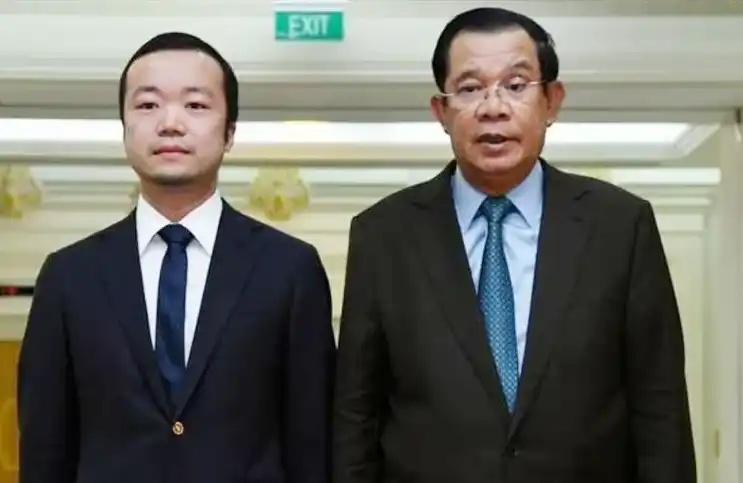Farcaster: Web3 social network created by ex-Coinbase exec
Editor in charge: 0x29
Farcaster was born from former Coinbase executive Dan Romero and Varun Srinivasan, another former Coinbase executive, began collaborating in 2020 on an idea called RSS+.
At the beginning of the establishment of the protocol, they expected to construct a system that not only enables users to have a direct relationship with their followers, but also allows developers A trusted neutral protocol to freely build new social applications. After several iterations, the Farcaster was born.
Introduction to Farcaster
Farcaster is a social network, decentralized and sufficiently decentralized. When two users on the network can find each other and communicate, even if the rest of the network wants to prevent users from communicating, developers can build many clients on the network to achieve enough decentralization so that users can always reach People who want to communicate. The protocol is an open protocol that can support many clients like mailboxes.

< /p>
Its early products are similar to Twitter or Reddit, but not quite the same. When we stop using Twitter and use other applications to socialize, the fans on Twitter will not transfer to other applications at the same time superior. Whereas on Farcaster, we can freely move their social identities between applications, social graphs and identities move with users, and users always have a relationship with their audience regardless of the application. Developers are also free to build applications with new features on the network.
Farcaster as a decentralized social network is not only about what users express, but also about what users can prove on the chain What. Users can connect their wallet address to display their own NFT, or use NFT as proof of past actions. It is even possible to build client applications on top of it to broadcast messages on the Farcaster network, as well as read messages from any user.
Detailed explanation of the components
Farcaster is divided into two important components: On-Chain Registry and Off-Chain Hosts.
Among them, users can claim their own unique username in the chain registry, and The registry is also used to store the user's host URL (web address) and is used as a "DNS (domain name) system" like the web. Because Farcaster's architecture means that user data may exist on different servers, users need to generate a new Ethereum address, Claim a unique username, and the username must also be associated with a valid host URL. In this way, when users want to read other people's messages, they can ask the registry smart contract for their host URL, and then access their messages from the host.
The registration form also has a series of security measures to protect the safety and privacy of users. For example: only the user can update their host URL, and the user can also protect the message by hashing and signing the message with the private key of their address. Not only that, the recipient can check the message signature and verify that it came from the user's address, which also has a corresponding username. For example, if a user receives a message claiming to be from @alice, he can ask the registry for @ alice's public key and verify that the signature is from @alice's private key.

< /p>
The off-chain host is used to store the user's social data. As long as it is signed with its own private key, the user can host its own content on any web server. There are two ways of self-hosting and hosting. choose.

< /p>
If users choose self-hosting, they can use the Farcaster network without going through a third party.
Users need to know how to set up and operate the Web server, download the corresponding client application, and use The application publishes messages to the server and gets messages from other servers on the network to achieve self-hosting, and the official also said that it is currently building a reference open source client for self-hosting.
In use, users need to configure more infrastructure and knowledge to achieve algorithm extraction Complex functions such as information flow, although full self-hosting has limited capabilities, can only send messages, read messages from a single user, etc., but for the Farcaster network, it is important that self-hosting ensures that users can always be in the absence of a gatekeeper. Sending and receiving messages is a prerequisite for the Farcaster network to pass the full decentralization test.
If users choose managed hosting, relatively speaking, they can get the best user experience.
Managed hosting can simplify uploading messages, crawl network data to provide recommended information, and provide use Client applications for this network. Similar to what Gmail is to email and Github is to Git, you can do everything a centralized social network can do with managed hosting. The Farcaster team also operates a managed host, which is currently in beta and invite-only.
Users can build their own managed host or self-hosted client, users who use managed host Communication with self-hosted users is free, as shown in the figure below.

Alice and Charlie self-host, Bob uses Managed Servers
Developers know how to use web servers to build highly scalable architectures, compared to Using blockchain to store user data and choosing to use off-chain hosts greatly improves scalability.
Project Background
Varun Srinivasan grew up in India, studied at Carnegie Mellon University, founded SoundFocus to help people with hearing loss, and worked at Microsoft. After that, he worked as a director at Coinbase and built an engineering team to develop products in four years. In addition to working at Coinbase, Dan Romero was previously an angel investor in dozens of early-stage technology companies, and the two are currently focusing on developing Farcaster.
Farcaster has received 30 million US dollars in financing, with the participation of top encryption venture capital and some famous people , of which a16z led the round, Coinbase Ventures, Ribbit Capital, Multicoin Capital, Volt Capital, A Capital, Standard Crypto, Scalar Capital, Elad Gil, 1confirmation, First Round Capital, Todd and Rahul's Angel Fund, Mischief, Ansa Capital, Haystack, Chapter One, Offline Ventures, Archetype, Canonical Crypto, Proof Group, Floodgate, Balaji Srinivsasan, 6529, Ray Tonsing, etc. all participated in the investment.
To make it easier for people to get started, Farcaster has also built a client application, currently The initial version, Farcaster v2, is being developed and is scheduled to launch later this year.
Exploration of Web3 Social Network
Social networks affect every aspect of our lives, and we found that most of the Web3 projects still rely on Web2 social media such as Twitter to complete narratives, publicity or other actions , and there are obvious problems in Web2 social media that users cannot always have a relationship with their audience, and users cannot truly own the content they publish. Is there a more complete decentralized solution for this problem? We are constantly exploring.
As a fully decentralized protocol, Farcaster enables two users to Communication between users is always possible, even if a network wants to block it, on which users have full control over their identity (username), data (messages) and social graph (relationships to others). This also includes the role of DID (Digital Identity). By observing the Token, NFT, etc. held by an account, you can know the user's activity proof, which is equivalent to the user's personal information.
Farcaster is similar to Lens Protocol, Cross Bell , etc., trying to explore cryptography and blockchain to provide a feasible solution for Web3 social network. To enable communication between two users under any circumstances, only three decentralized features are required: Claim a unique username, the ability to post messages under that name, and read messages from any valid name. Farcaster builds new social forms through decentralized name registries, hybrid off-chain/on-chain architectures for network scaling, and more. Could this be the beginning of Web3 social networking? Let's also look at the impact of the next application landing.
Welcome to join the official BlockBeats community:
Telegram Subscription Group: https://t.me/theblockbeats
Telegram Discussion Group: https://t.me/BlockBeats_App
Official Twitter Account: https://twitter.com/BlockBeatsAsia


 Forum
Forum Finance
Finance
 Specials
Specials
 On-chain Eco
On-chain Eco
 Entry
Entry
 Podcasts
Podcasts
 Activities
Activities
 OPRR
OPRR









